
When dealing with servos there are several checks that are performed before they are used. These checks are:
These four topics will be discussed below.
When testing a new servo, it was observed the servo moved very slowly. It was decided to examine the gear train to see if there was something wrong with it or if it was an electronic issue. Once the cover was removed, it was very evident that the lubricant of the grease was gone and only the thickening agent remained. It resembled a clay like substance and was just as stiff (the exact thickening agent was not know). The gears were all removed, cleaned and new grease applied. The servo move noticeably quicker during testing and the case did not get as hot. Below is an example of a properly greased servo gear train.
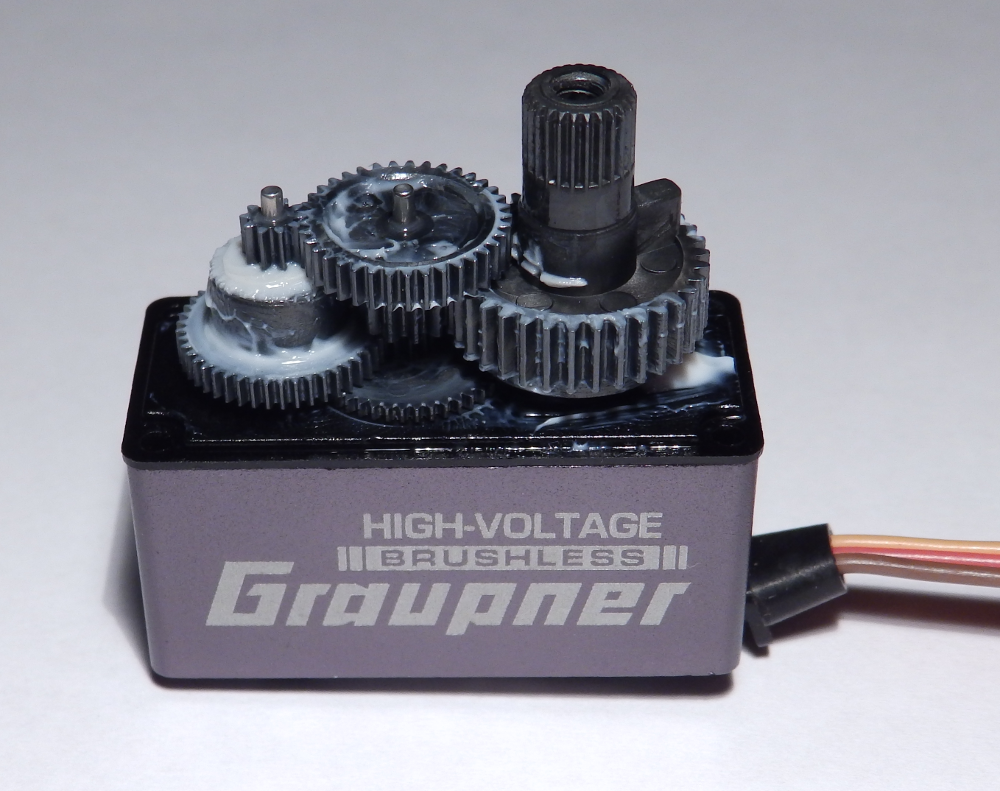
Several servos when operated made a slight clicking noise. One at the flying field and other while being inspected before the burn-in test. In the first case, the servo was already install in a radio controlled helicopter and controls were being checked before flight. A slight clicking noise was heard when the servo moved the swashplate, but the decision to fly was still made. Several minutes into the flight, the servo failed and the helicopter crashed. Upon examination of the damage servo, the teeth of the first gear were worn away, not stripped. It is assumed the clicking noise was the built up of contaminates in the motor pinion gear that eventually lead to wearing out the first gear. The first gear was made from a carbon-nylon material and not metal. This crash and the finding of bad grease lead to the decision that all servos will be inspected and burned in before usage.
Hooking up a new servo to a servo tester, a clicking noise was heard. It was decided to perform a close examination of the gear train. Upon a careful examination and careful removal of the grease, a small metallic particle was discovered wedged in between the teeth of the motor pinion gear and first gear. Below are some pictures of the particle and the damage it made to the pinon gear.
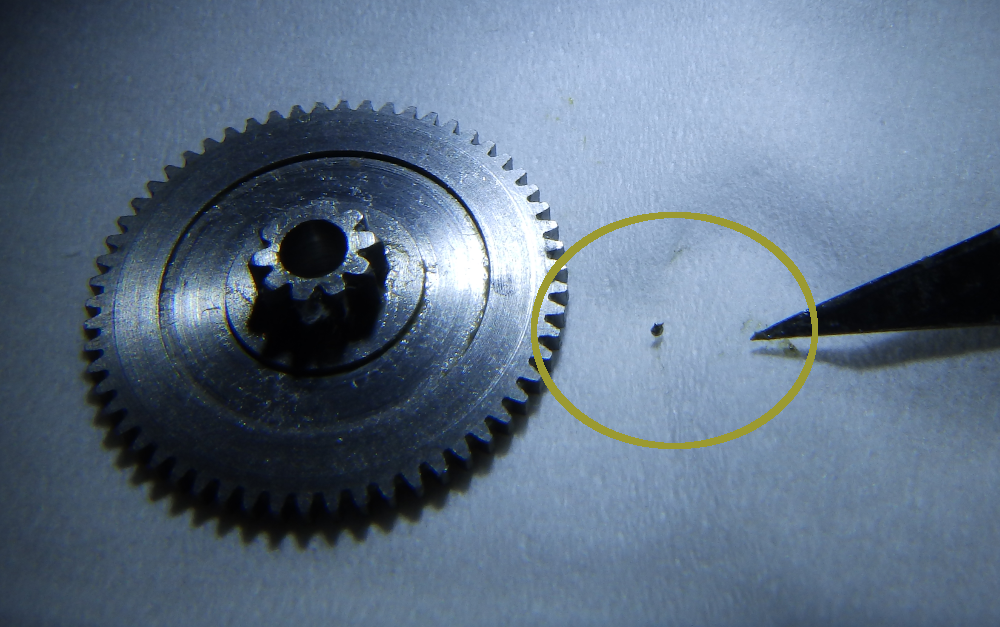
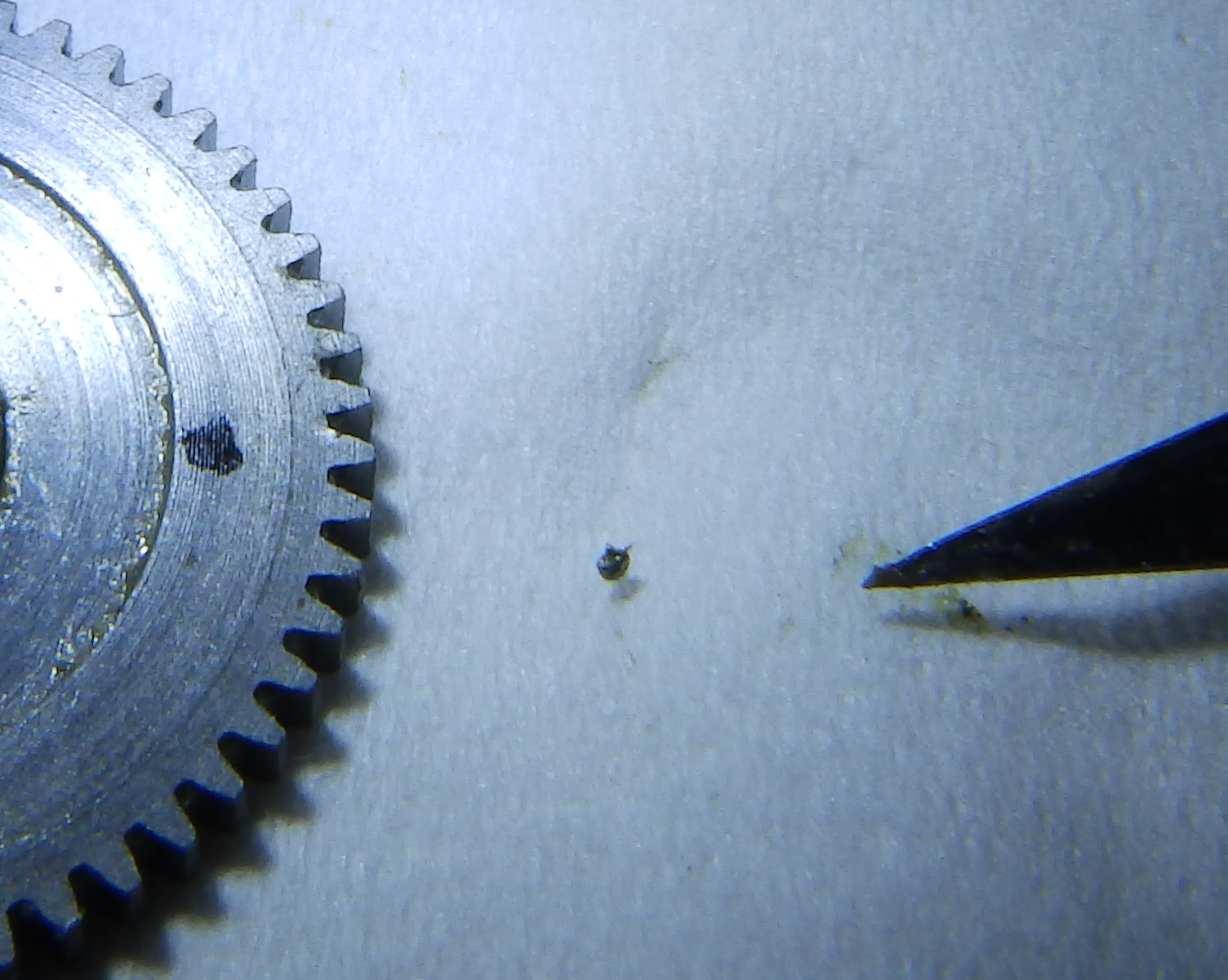
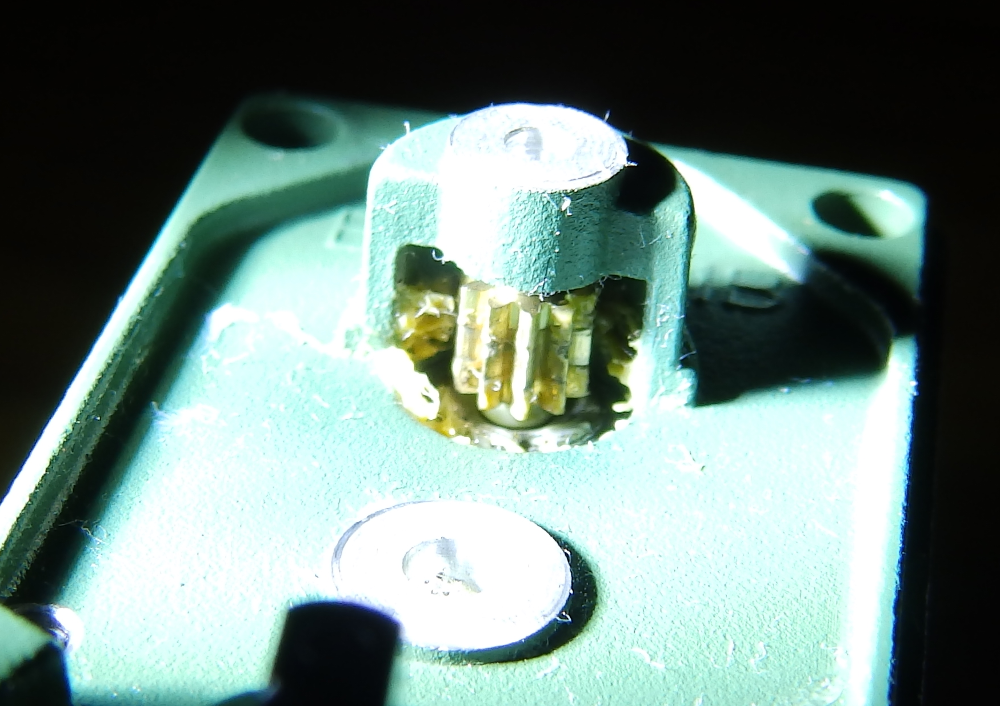
When testing a new servo, the movement appeared to be intermittent. When the servo power/signal cable was moved the servo would also sometimes stop working. Examination of the electronics revealed very poor soldering of the cable to the printed circuit board (PCB). It can be seen from the pictures below that the movement of the cable actually caused a short due to loose wire strands. Further examination showed the wires to the potentiometer were also poorly soldered. It is suspected the original PCB may have failed and a new one was poorly soldered in. This was a brand new servo. Below is a series of pictures showing the poorly soldered connections along with a picture showing what a proper soldering connection looks like. Note, it also has a clear silicon covering over the exposed wires.
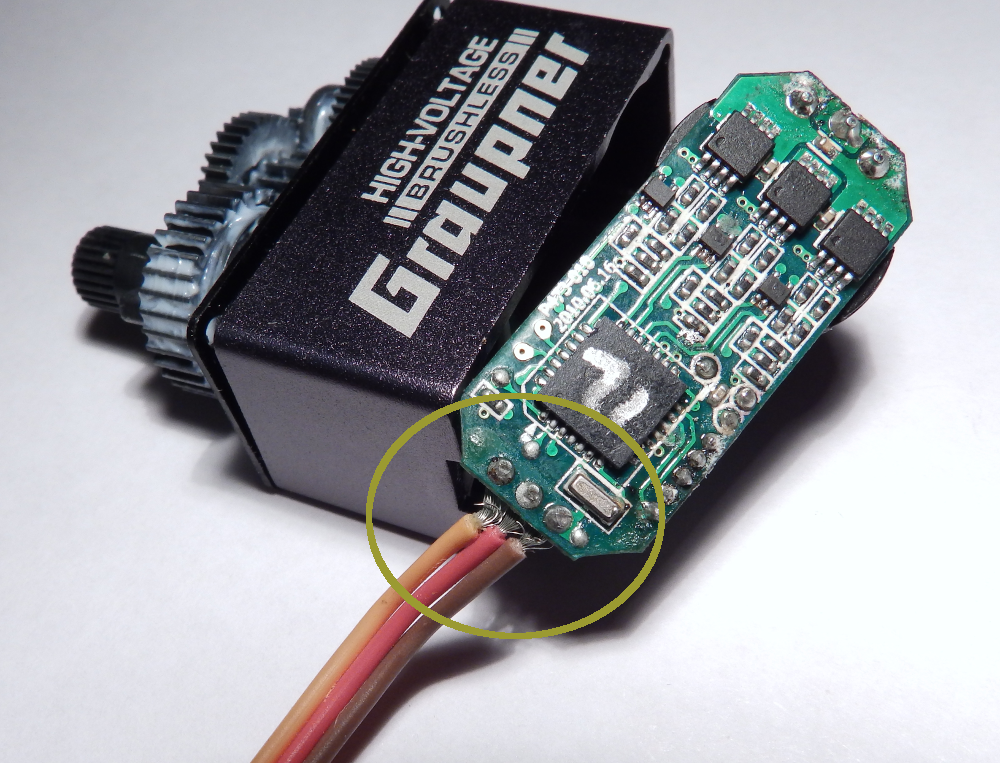
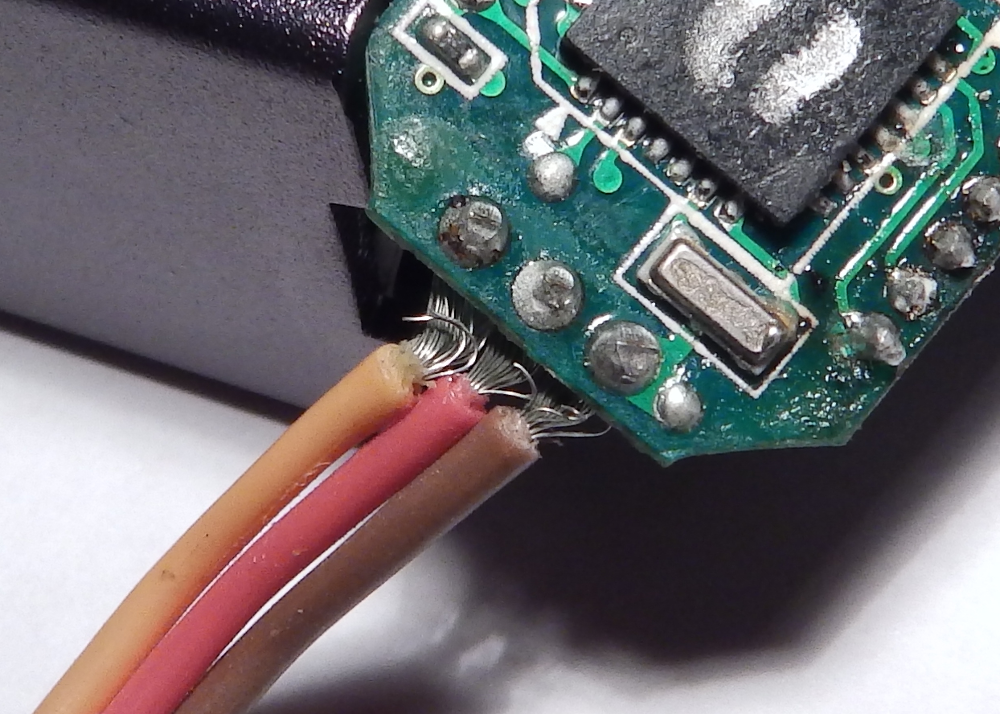
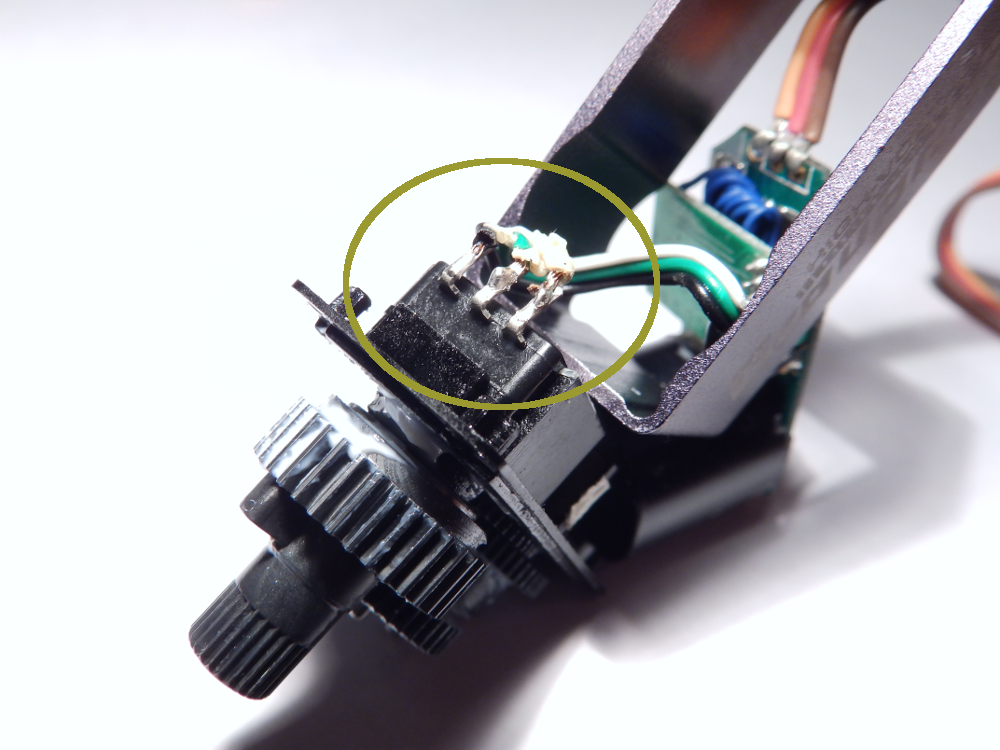
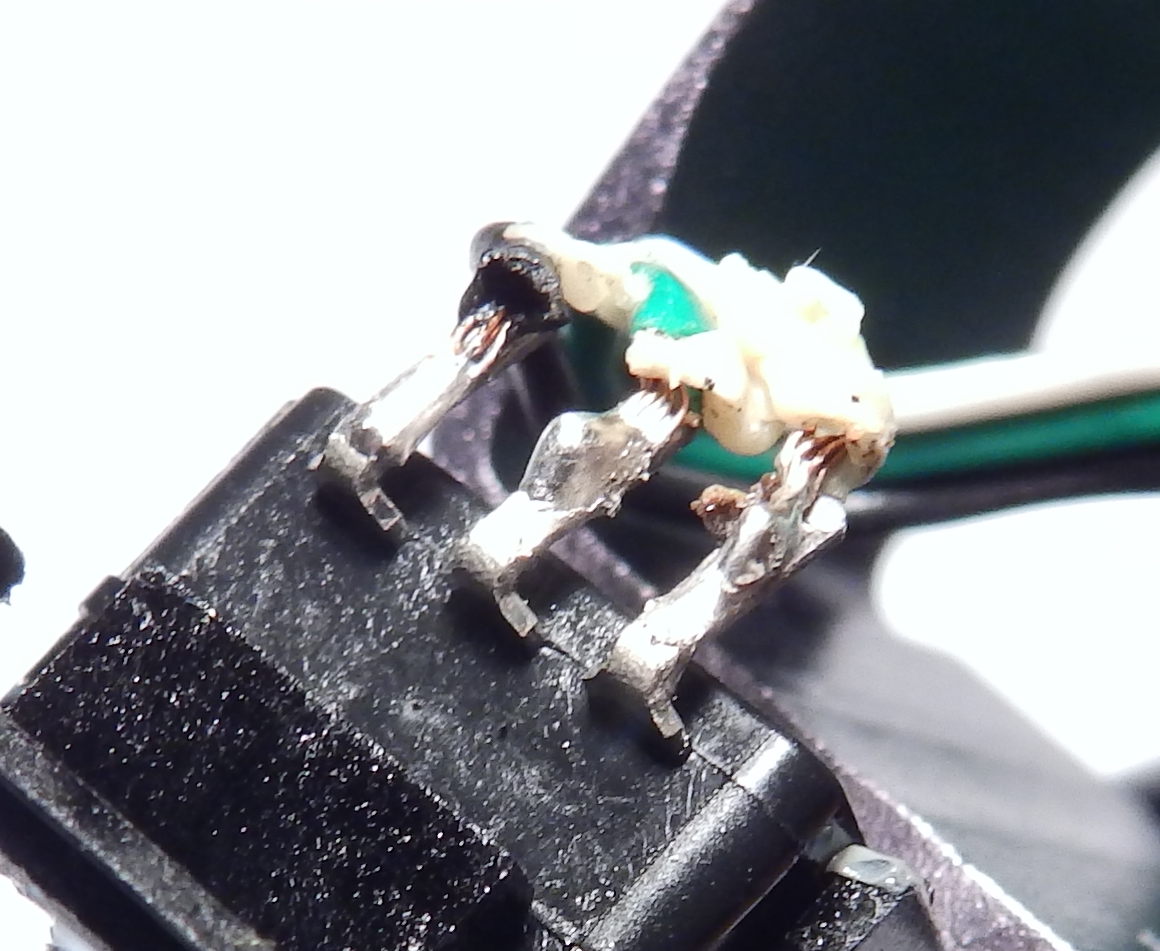
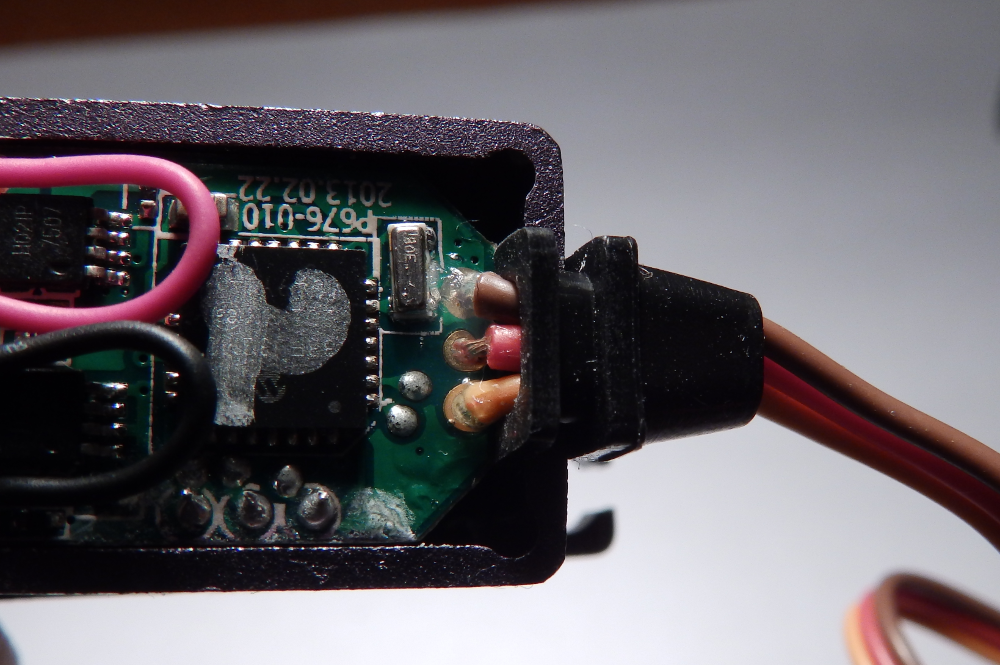
To avoid early failure of a servo, a burn-in process is used before installing a servo. If this practice would have been applied early on, it would have prevented several crashes due to servo failure. The idea of the burn-in test is to exercise both the electronics and the gear train under simulated actual loads until it is certain the servo is past the burn-in phase and is in its useful life. This is depicted in the “bathtub” chart below.
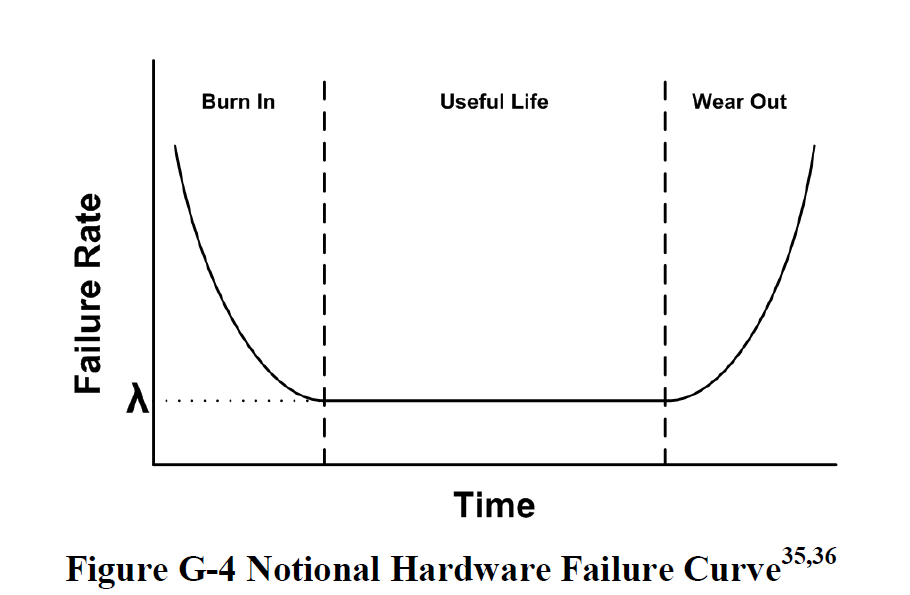
Because no useful tester was found that could burn-in the electronics and simulate actual loads, a tester and fixture was developed. The link to the page is by clicking HERE.